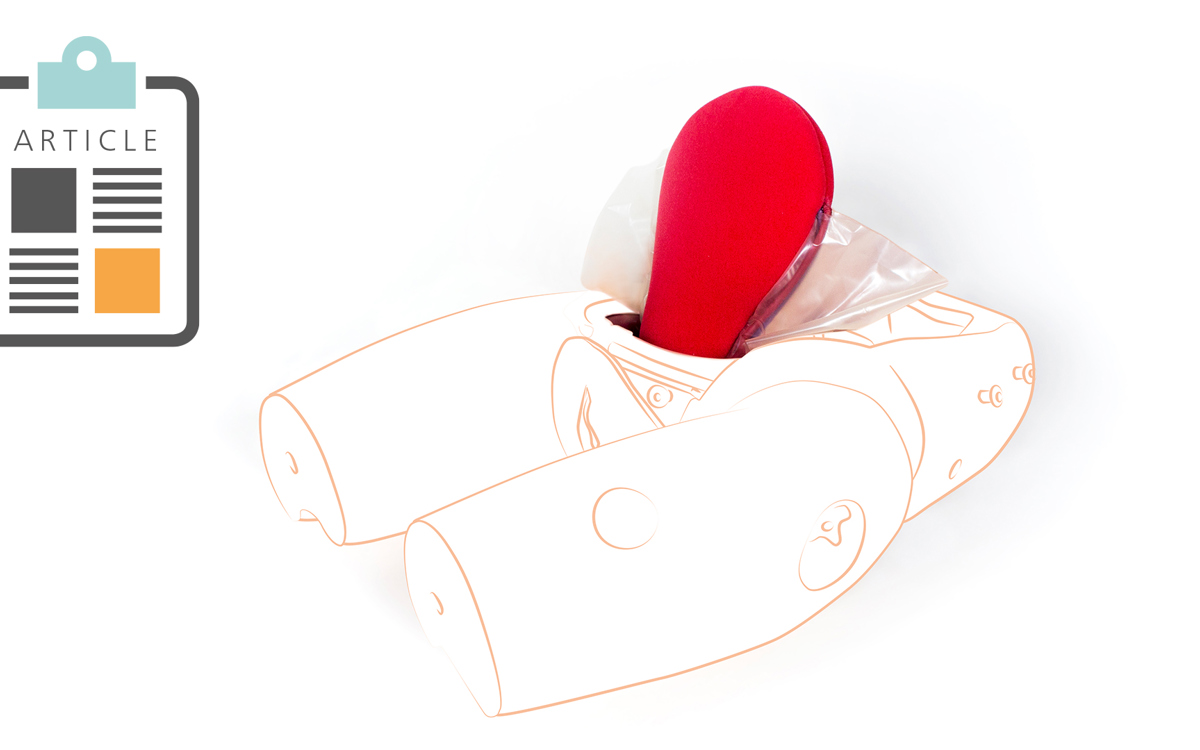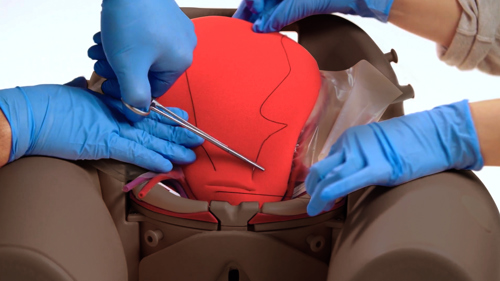The Importance of Uterine Compression Sutures
It is estimated that Postpartum Haemorrhage (PPH) may occur in up to 7.9% of women undergoing vaginal delivery and 6.75% of women delivering by cesarean section.

Risk factors associated with increased rates of PPH after vaginal delivery include increased length of first and second stages of labour, higher maximum oxytocic medication rate and duration of usage, treatment with magnesium sulfate during labor (for preterm labor or severe pre-eclampsia), and episiotomy.2 Risk factors that increase the chance of PPH after caesarean section include placenta accreta (remaining attached after delivery), placenta previa (low-lying), placental abruption (premature pulling away from the uterine wall), low blood count on admission (hematocrit <30%), and prior uterine scar. Other factors that are worth noting in both groups include multiple birth, large infant, >4 vaginal deliveries, and stillbirth.1
Traditional methods of treating postpartum haemorrhage related to uterine atony include uterine artery ligation, gauze or balloon tamponade, or even hysterectomy if needed to save the mother’s life. However, in 1997, Dr. B-Lynch and his team pioneered a new uterine compression suture technique of treating PPH that has led to improved outcomes while preserving fertility in women.3

Uterine compression sutures work by squeezing the vessels of the uterine wall, slowing blood flow, enhancing the contraction of the uterine muscle, and increasing the ability for blood to clot rapidly. There are currently three techniques of applying the suture (B-Lynch, Hayman, and Pereira), but all have been proven to be significant in decreasing bleeding time, improving recovery time of the uterus, and show a decreased risk of adverse reaction.4
The World Health Organization’s (WHO) recommendation for the prevention and treatment of postpartum haemorrhage states “conservative surgical approaches should be tried first. If these do not work, they should be followed by more invasive procedures. Compression sutures may be attempted as a first intervention.”5
Limbs & Things, working with a design created by Dr. Carol Simmons, an OB/GYN specialist from South Carolina, offers an effective, affordable model for teaching the skills associated with compression suture. The Limbs & Things Postpartum Compression Suture Uterus includes uterine arteries, veins, and broad ligament, teaching the skills of all three common types of compression suturing, as well as dissection of the broad ligament and ligation of the uterine arteries. Each model can be used up to 20 times, allowing the learner to gain competence as well as confidence in performing the procedure in a safe, non-emergent environment.
The compression suture uterus is an optional module of the popular PROMPT Flex range of products, allowing the OB team to move easily from delivery to identification and management of PPH and use of the compression suture. To further simulate real life, the PROMPT Flex range can be used with simulated patients to allow for ongoing communication regarding the emergent scenario.
PPH continues to be a leading cause of maternal morbidity and mortality around the world, with notable racial disparity of complication rates 3-5x higher in black women. Emily Petersen, M.D., medical officer at the Centres for Disease Control and Prevention (CDC) states “These disparities are devastating for families and communities and we must work to eliminate them; There is an urgent need to identify and evaluate the complex factors contributing to these disparities and to design interventions that will reduce preventable pregnancy-related deaths.”6
Using the PROMPT Flex range of products, OB teams can learn to identify and quickly respond to PPH with the goal of decreasing the number of preventable maternal complications globally for all women, making childbirth safe for families.
To find out more about the Compression Suture Uterus module and its uses in conjunction with our PROMPT Flex Range, please get in contact with our team.
References:
1: Kellie FJ. Medical methods of preventing blood loss at cesarean section. doi: 10.1002/14654858.CD007576.pub2
2: Miller CM, Cogn S, Carvalho B, Blumfeld YJ, Butwick AJ. Postpartum hemorrhage following vaginal delivery: risk factors and maternal outcomes. doi: 10.1038/jp.2016.225
3: Matsubara S, Yano H, Ohkuchi A, Kuwata T, Usui R, Suzuki M. Uterine compression sutures for postpartum hemorrhage: an overview. 92:378-385
4: Jiang H, Wang L, Liang J. Uterine compression suture is an effective mode of treatment of postpartum hemorrhage. doi: 10.12669/pjms.36.2.1072
5: WHO
6: CDC Press Release
Did you like this article?
Share on social media and remember to tag us!

